
The Beauty of Focus Play: Creating Overloads in FM21
The following article is Part 1 in a multi-part series of guides on developing Possession-focused tactic in FM21. It is inspired by Pep Guardiola’s style but is not meant to be an accurate recreation of Pep’s tactics. Instead the tactic in this guide is largely inspired by Total Football and continues my quest to bring this style in all of its beauty to Football Manager games. Read on if you love Total Football and would love to see how it can be possible in the game. I believe that with the new improved Match Engine we are now closer to achieving something resembling Total Football. And it starts with creating overloads in FM21.
New FM = Better Overloads
So I have been trying to create overloads in Football Manager for at least the last two versions of the game. It is an obsession that started in FM19 and continued in FM20. Although to tell the truth, towards the end FM20 cycle, it began feeling like pushing a giant rock up a steep incline.
Not sure if it had to do with the clubs I chose to test my tactics or the opposition constantly packing the backline against us. But in the end I didn’t have the easiest time last year. One thing I found out the hard way is that Portuguese League is not ideal for testing Guardiola-inspired tactics. Not much testing to be done when all but two teams park the bus against you and don’t really respond to your overloads. You end up having a lot of possession but few goals to show for it. So this year with FM21 I decided to test my possession-focused system in probably the most competitive league in the world. One that has “Big Six” clubs to compete against. It is also the league where Pep has been doing his own testing of late.
Well, the game has been out for less than a week and I can attest the difference is quite dramatic. Whereas in FM20 I felt like angry Pep above, struggling against my stone, in FM21 the burden is suddenly lifted! What a relief it is watching my teams execute the build-up plan almost perfectly and spring the overload trap.
So I turn into the happy Pep in FM21! But what changed between the 2020 and 2021 versions of the game? The two words are: Focus Play.
Ready, Set… Focus!
The beauty of Focus Play (down specific flank or centre) instruction is in how it affects player behavior. Unlike similar instruction in FM20, it actually instructs the players to move into the focused side’s half-space. So what this means in terms of the tactics, is that it is easier than ever to create overloads. And now this also translates into ability to create even more elaborate possession tactics.
With the improved Focus Play instruction, you do not need to rely on roles that are hardcoded to drift into the half-spaces, such as mezzala and carrilero, anymore. Now if you tell your team to focus play down the right, then your central midfielders will do exactly that, drift to the right side of the field and create an overload there. If you tell them to focus down the middle, they will concentrate their play and movement there, overloading the opponent there and giving more space to your wide players to exploit. This tendency can be even further amplified with Play Narrow instruction.
All in all, it’s much easier to set up overloads and the players are more inclined to perform them. So if you are used to playing with Guardiola-style patient possession, then your teams are bound to play even better in this way.
Of course, your players will need to have good tactical familiarity with such tactics before being able to pull off these complex maneuvers on regular basis. And not to mention you will need players with suitable attributes. But more on this later.
Overload and Isolate
If you are wondering what overloads are, then you should check out some of my previous articles. While the game changed, the theoretical concepts behind what I’m trying to do haven’t. Here you can find the FM19 and FM20 version links. I strongly recommend you check these articles to see the evolution of my Overload systems to where they are today.
The 4-2-3-1 (or 4-4-1-1 in defensive positioning) is an ideal formation to encourage overloading. The number one reason for this is simple. The formation has a Number 10 AMC position. Given the right role and attributes, this player is free to roam around and be creative. He can at any time shift to either side of the field to help maintain possession and aid in the overload. In Italian football it’s often been the privileged role of the Fantasista. It’s a somewhat mythical role that’s nevertheless accurately mirrored by the Trequartista role in the game. Essentially representing players like Maradona or Messi, who are the creative heart of the team. For most effective overloads, you will need such a creative player in the AMC position. Although he doesn’t necessarily need to be someone of Messi’s caliber. After all there is only one Leo. But someone like Kai Havertz would suffice.
Another reason why 4-2-3-1 is ideal for creating overloads is the ease with which you can isolate one of your fast wide players. When the opposition is drawn to the side of the overload, it invariably leaves either your wingback or winger alone unmarked and ready to exploit space on the opposite flank. In this way, Overload and isolate, is the one-two punch concept used by Guardiola. Because there is no point in creating overloads, if you cannot take advantage of them. In 4-2-3-1 formation it’s possible to fully engage the opponent’s midfield and defence while still leaving one of your fullbacks as a sort of “deep shadow striker” with loads of space to attack. You can see an example of this in tactical image below. There the blue #3 left fullback is your deep shadow striker. But more on this later. First lets take a look at #10 player.
Free Number Ten
One of the key components in my 4-2-3-1 tactic. The three key aspects of my ideal Number 10 is that he needs to be extremely intelligent (mentality), agile/mobile (physique) and creative (technique). Basically he needs all these qualities to take advantage of the space that opens up because of an overload. Firstly, his intelligence should aid him in realizing what to do when an overload happens. Then he needs to be fast and agile enough to get into the right position. And finally his technical skills and creativity should help him pass the ball to where it can do most damage. Someone like Havertz already has strength in these three areas, with potential to grow even better.
Again going back to the tactical map above, lets assume you are playing as the blue team. Your right-side wide players and central midfielders have managed to attract the opponent to the right side of the pitch. Then your Number 10 comes to their support. He needs to receive the ball and then do a quick tempo change to launch a long pass to your right-flank attackers. For this reason, having Dictate Tempo trait is ideal for this player. Also it is better not to specify the length of passing in your team instructions. For best overloads I prefer to leave the passing on default. Thus I let my playmakers decide (based on their mental attributes) or instruct the players individually.
The choice of individual traits is only one of the factors that make up a perfect Number 10 in an Overload Tactic. The attributes needed for this demanding role all fall within the technique, mentally and physique triumvirate. You will need the right combo of these to make a good creative lynchpin. For technical attributes, he will need Dribbling, First Touch, Passing, and Technique. In terms of mentality, the usual suspects are Anticipation, Composure, Decisions, Off The Ball, Teamwork, and Vision. Additionally, he’ll need physical attributes with focus on Acceleration, Agility and Balance. Good Balance is important because it will make it more difficult for opponent to wrest the ball away from your player.
Striker – Workhorse of the Formation
Continuing with the Blue and Red team example. As you can see our Blue Number 10 has just shifted across to the right. Given his creative freedom, he naturally gravitates to the side with the ball, to make himself available for a pass. This also helped create a five-person overload on that side of the pitch.
The Red opponent’s reaction would be to shift over to cover this concentration of Blue players. Yet while their defensive block has shifted, there isn’t enough open space on the left flank for us to exploit. This is where the striker role in the formation comes in. The striker (Number 9 in image) will help us create more space on the left flank. He will do this by drifting to the side of the pitch that we are overloading. And this will force the Red Team’s defensive line to shift there to deal with the new striker threat. With striker movement being the final puzzle piece, there is now better chance for 2v1 overload on the left side. Our blue Number 3 wingback finds himself in prime position to take advantage of the space that suddenly opens up.
It goes without saying that you will need a specific sort of striker to help with this complex maneuver. He must be a player that will constantly put pressure on the opposition when they have the ball. As well as one who will close them down relentlessly and chase any loose balls. All in order to prevent the opposing players from having too much time on the ball. Essentially, your striker must be the total opposite of a poacher, hanging around waiting for the ball to find him. Can you guess what role I’ll use?
I admit I gave it away by paraphrasing the game’s definition of the Pressing Forward role. But that’s the thing, it is the perfect role for an overload system. Since the Pressing Forward will always seek out the side with the ball, he’ll further help shift the opposition defence towards that side. I don’t have much else to say about this role, except that it’s probably my favourite role in the game. A role that I already wrote about quite extensively in my Dynamo Project. There I also expanded on the attributes that you will need for a player to fill the role. But here is a good example of one.
Timo Werner is easily one of the best young Pressing Forwards in the game. I expect his role to be essential in my Chelsea Overload experiment.
Deep Shadow Striker
While the Trequartista/Fantasista acts as the creative catalyst, helping to create the overload, the Deep Shadow Striker Wingback will be your player that takes advantage of the space liberated. To achieve effective overloads you will need both of these roles to be the core of your tactic. And naturally they will probably be among your best players, ones to build the rest of the formation around. This is simply due to the attributes needed for their roles. The Deep Shadow Striker role incidentally requires some of the similar attributes needed for the Trequartista. Except perhaps the passing skill and range. Just like the Trequartista he will need to be exceptionally intelligent in order to know how best to exploit any space that opens up. Also he will need good physicals and technicals (finishing and dribbling) to give him the offensive edge.
Not surprisingly you will need to start with a pretty strong team if you want to test this tactic effectively. Relative to your league of course. I chose the current Chelsea squad for my own test. My choice was governed by the fact that Werner, Havertz and Pulisic are on the roster from the start.
The average age of this former Bundesliga Stars Trio is 22 y.o. So it gives them much potential to improve and really grow into their essential roles in the tactic. They can easily become my best players to build the rest of the formation around.
Here you can see how I set-up the rest of the team around the core of Havertz, Werner and Pulisic. The three key roles are set, while the others might still change as the tactic evolves. To me the individual mentalities of the players are far more important. These individual mentalities will drive the slow build-up and progressive possession that I am looking to recreate. But they also are not final as much testing still remains.
In my opinion, most good football tactics are build around the team’s best players. You want to get the most out of your stars to succeed in the game. And I believe that Chelsea can be an absolute powerhouse, even from the start. One just needs to find a way to activate their young stars. This experiment will partly be about that, developing possession tactics that let your stars shine. Regardless of club. But it will also be about finding the right Team Mentality to achieve Total Football style in FM21. But more on that in Part 2 coming soon.
Little Side Note
Finally, a little a note regarding my choice of club for this test. At first glance the tactics seems to be too dependent on unique selection of players that only Chelsea has. But in truth I was torn between several top half clubs before settling on the Blues. Just to give two examples, Lazio in Italy and Spain’s Atletico Madrid also have the right set-up for this tactic. They might even do better as both possess more technical players overall. Lazio has Immobile and Caicedo to fill the Pressing Forward Role, Luis Alberto as Trequartista and Lazzari in CBW role.
Although Lazzari might not be the best due to his low finishing and being exclusively right footed. Ideally, you really want someone to cut inside in the final third. Yet playing him might give a new dimension to the tactic. More along the lines of having an unmarked player to deliver quick crosses to your striker to latch unto.
In Atletico’s case, you also have a squad with ideal candidates for the three core roles. The Deep Shadow Striker role alone could be filled by no less than three. That is Lodi, Carrasco and Lemar. Then you have both Diego Costa and Suarez competing for the Pressing Forward role. And of course your Trequartista would be none other than Joao Felix. He was born for that role.
So there you have it. In the end I chose Chelsea because I prefered the challenge in Premier League and the satisfaction of developing its young attacking core. But your choices are probably many. And I would love to hear about what other clubs and players you think would fit my criteria.
Tactical Addendum
This wouldn’t be an article on FM tactics without at least a little demonstration of overloads in action. I apologize in advance that there is no video. I still haven’t found a way to upload a game highlight to YouTube. And I am not technological enough to use external video capture techniques. But I hope that the following two images can convey to you what I talked about.
The above shows the player positioning at the start of Chelsea (blue) move that eventually ended with a Pulisic goal. You can clearly see the 6 player overload that drew at least 7 of the opposition players on the left. The Winger (Hudons-Odoi) and DLP(Kovavic) are controlling the ball by passing it between eachother and the Inverted Wingback Alonso. In the meantime the CWB Pulisic, our Deep Shadow Striker, together with his Inside Forward partner has managed to isolate the lone opposition fullback in 2v1 on the right flank.
A quick pass from our IWB and Pulisic finds himself with the ball and in prime position for a run towards goal. Like a hot knife through butter he cuts through the defence. The opposition is scrambling back into position to block his entry but its already too late. They are no match to his acceleration and ability off the ball
Its a neat little move that took about 10 seconds in total. And its something that I’m starting to see more of as the season proper is starting. Of course as our opposition improves there will be need for adjustments. But overall the foundation is set for the tactic. So in the next update I will discuss how our chosen Team Mentality is effecting the strategy and the contributions of instructions, roles and individual mentalities. At that point the tactic would be ready for you test yourself. For now, thanks for reading! If you enjoyed, please follow us @ Dictate The Game’s Facebook and Dictate The Game’s Twitter. And here are other articles you might like:

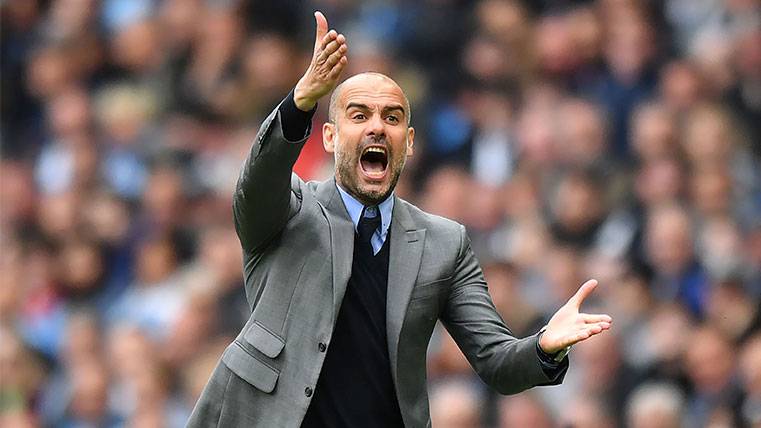
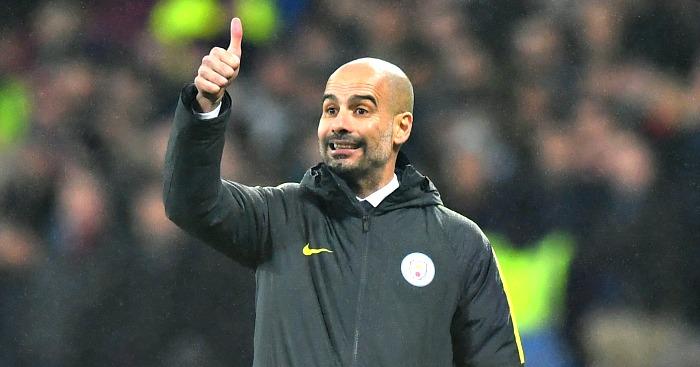

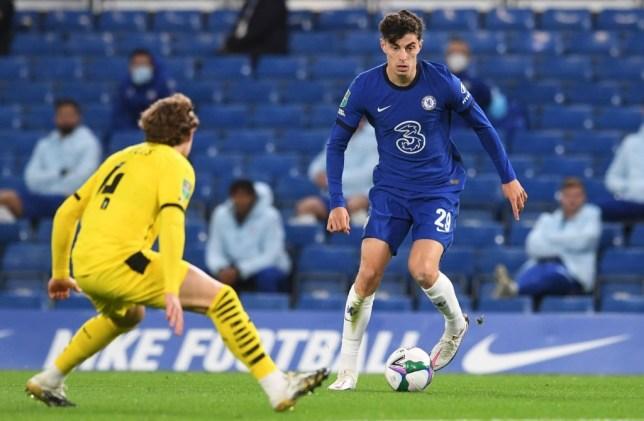
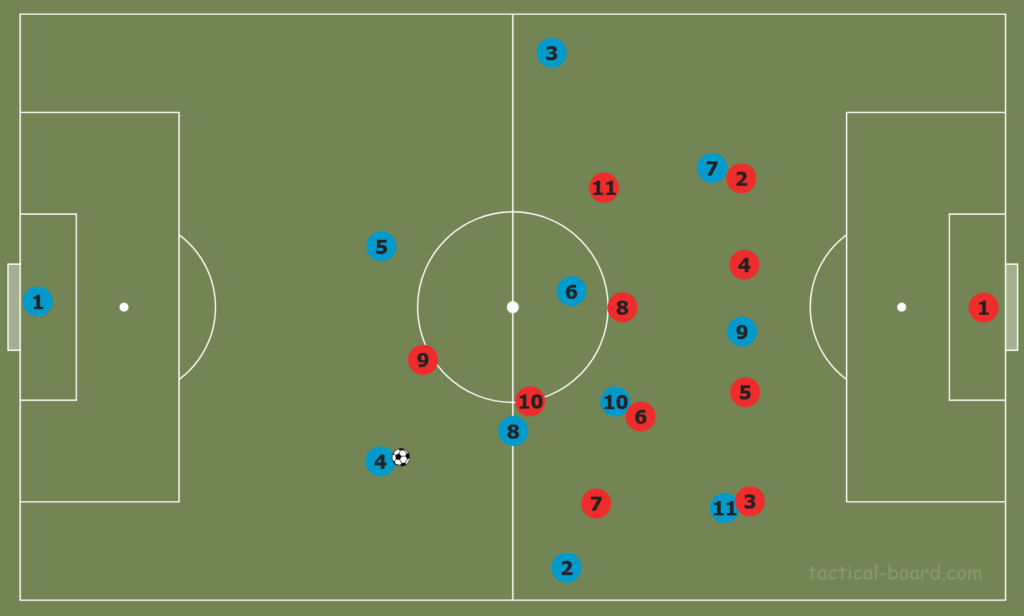
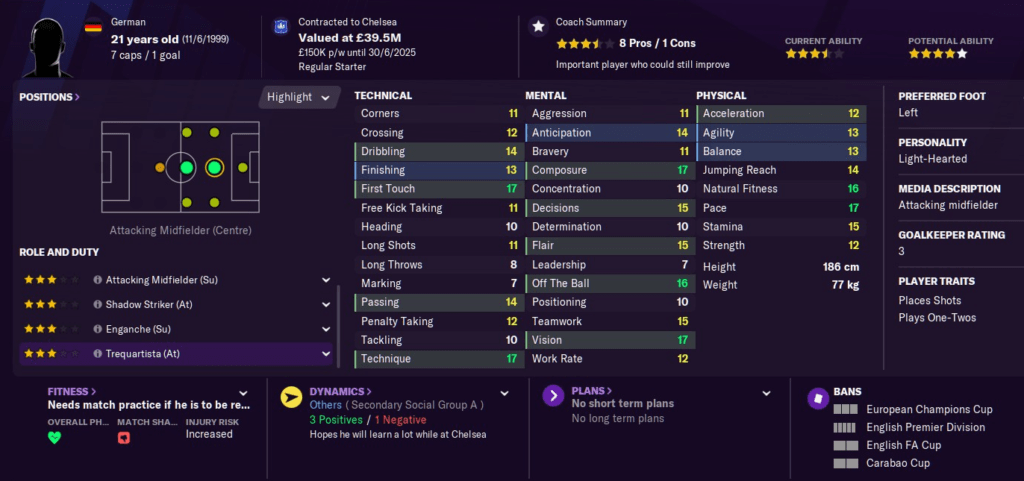
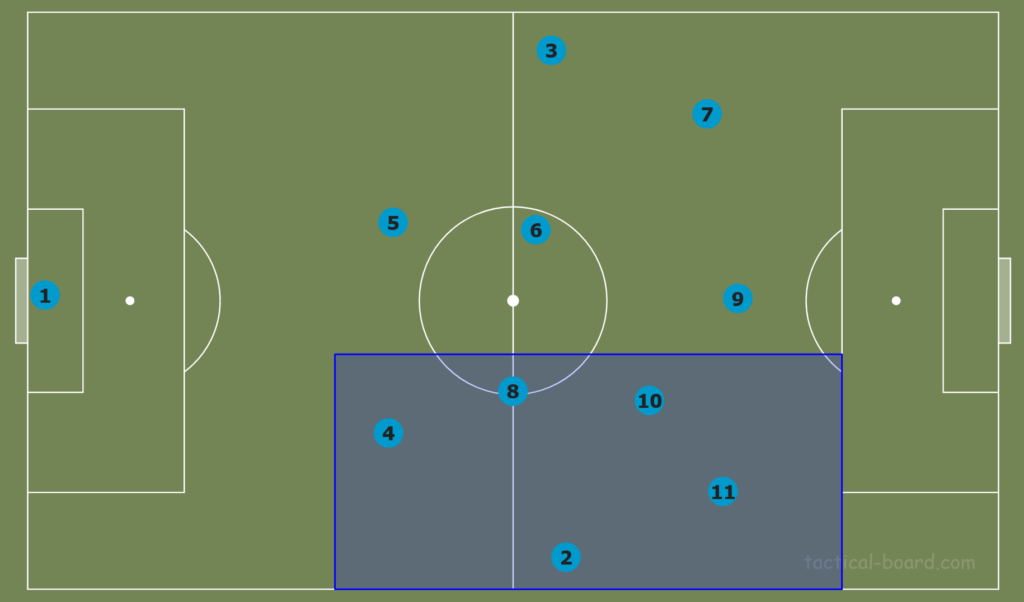
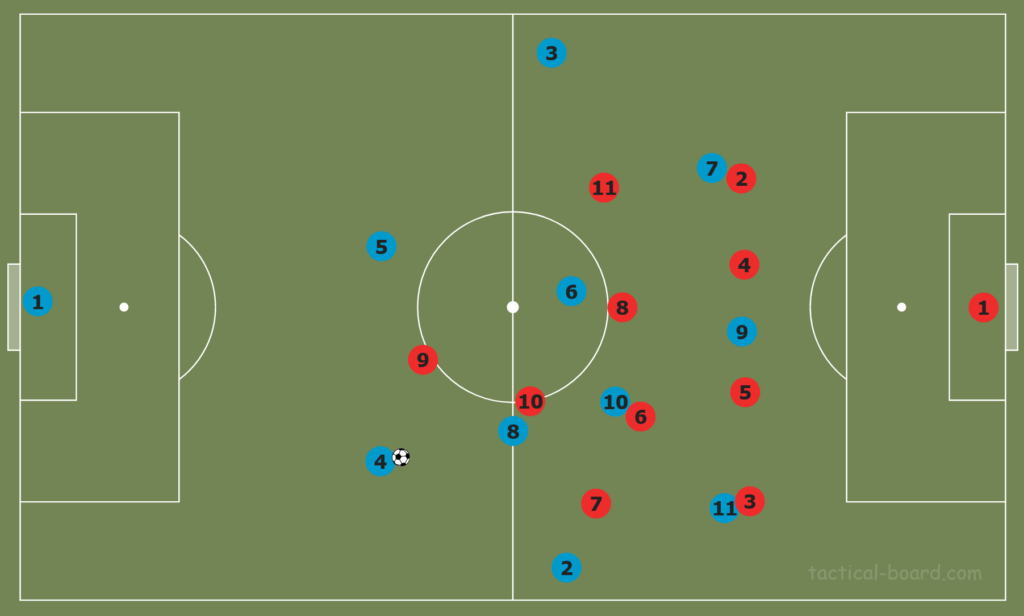
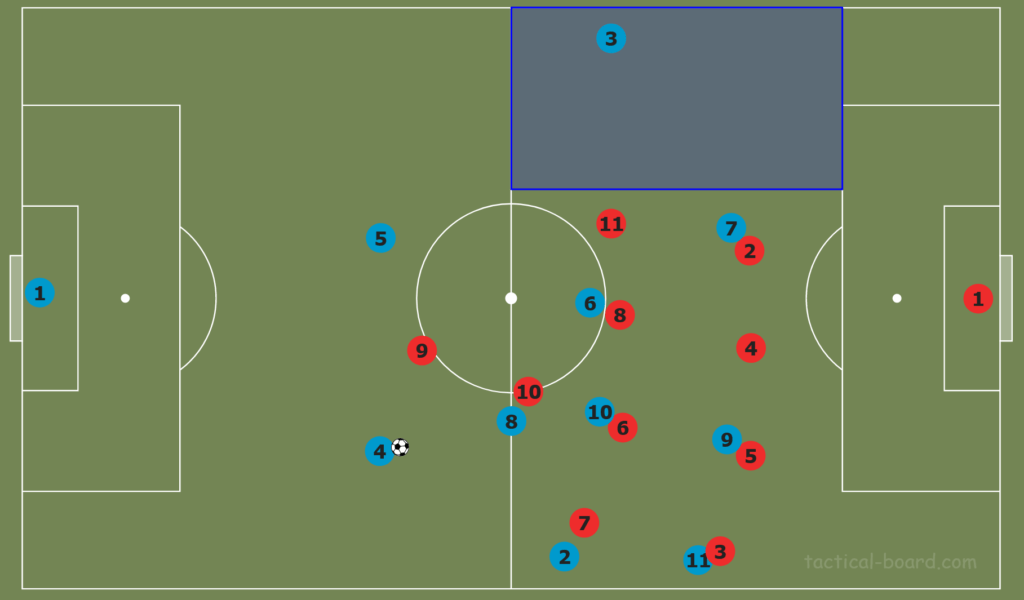

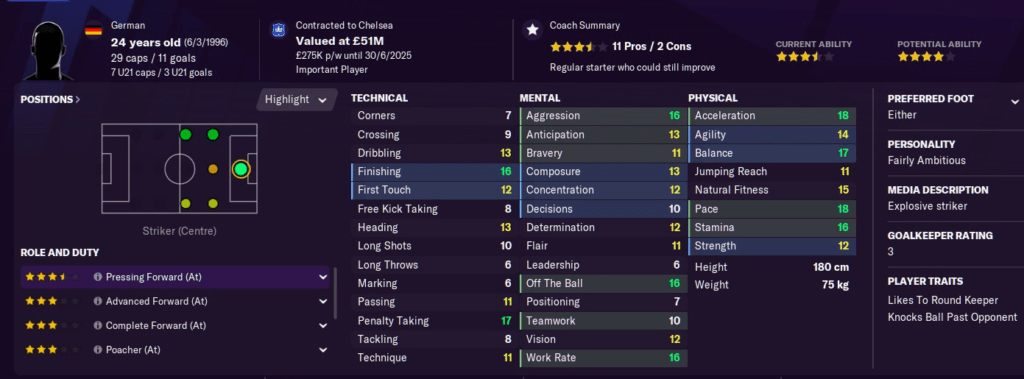



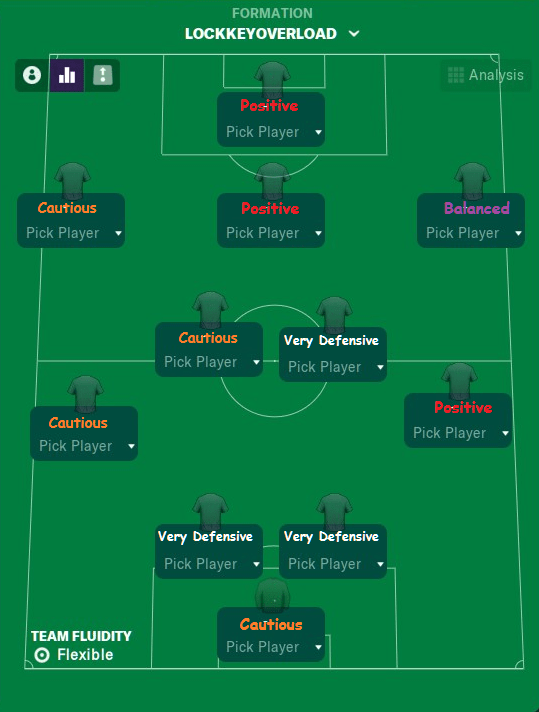
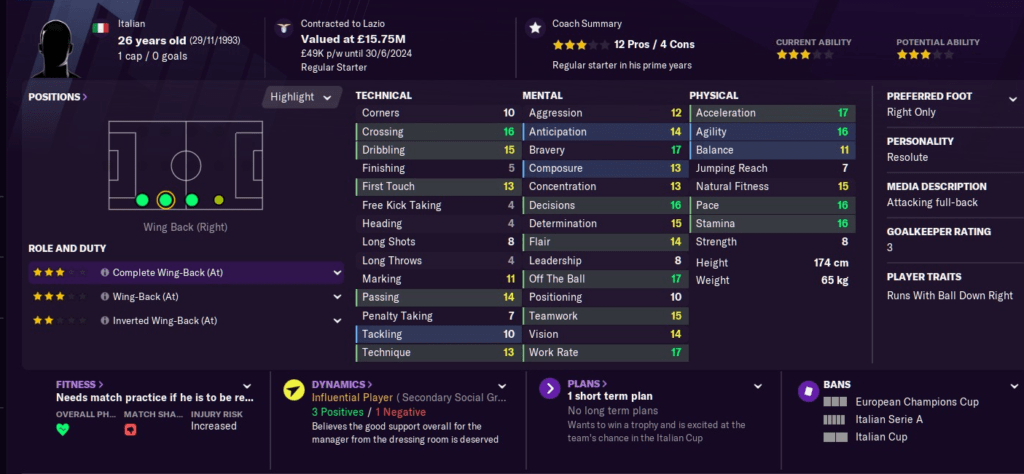

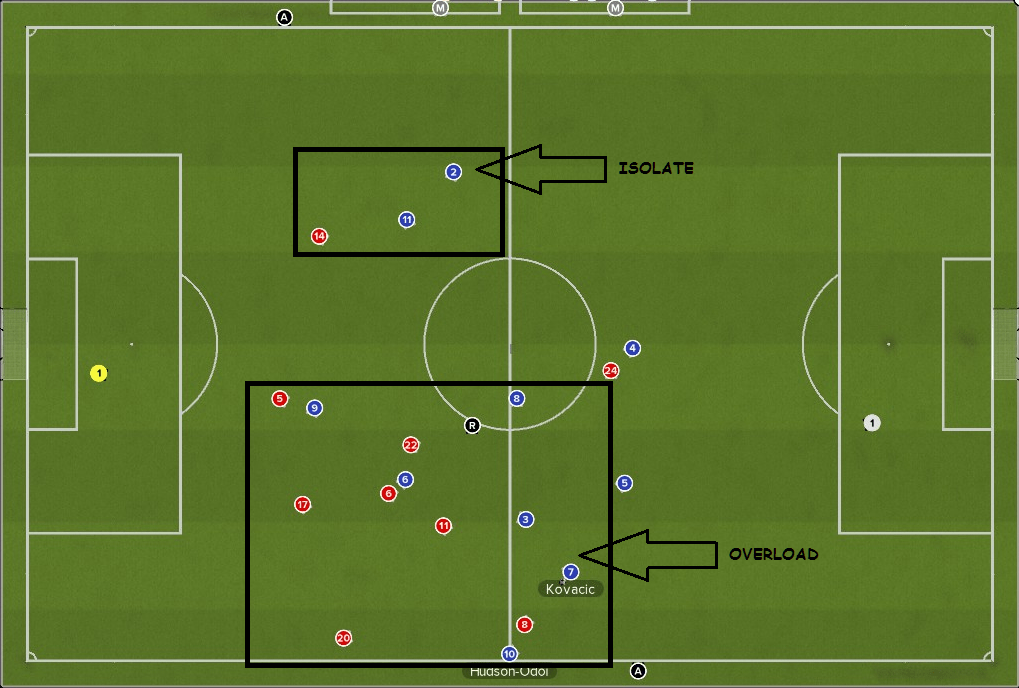
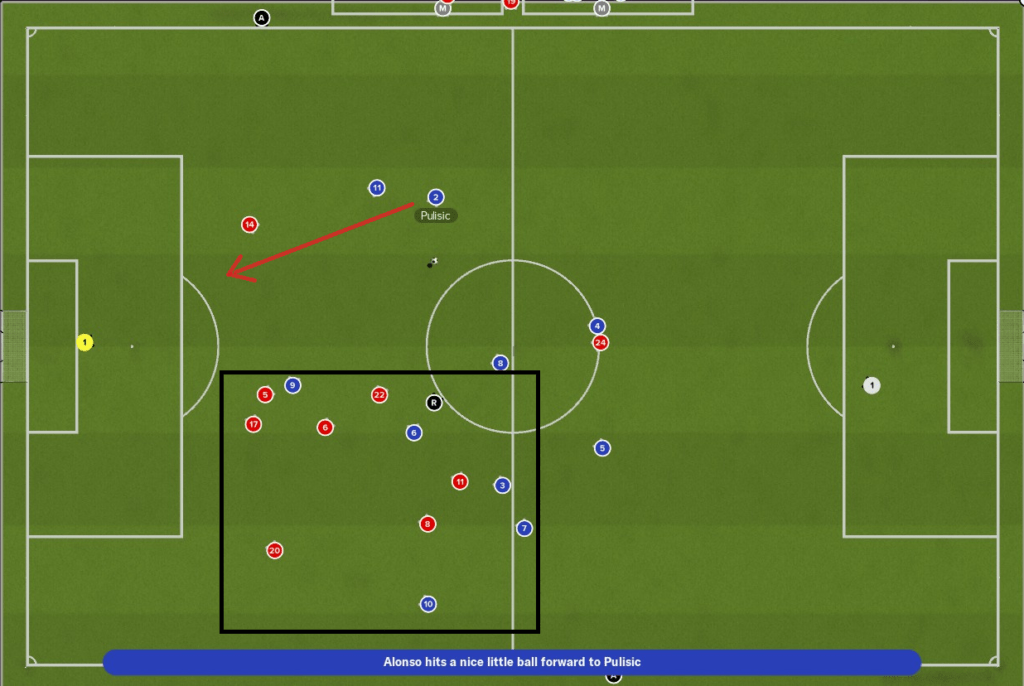

5 thoughts on “The Beauty of Focus Play: Creating Overloads in FM21”
So where can I try this tactic?
Haha more like when mate. I’m still working on getting the kinks out. And now that Touch is out testing might go faster. So hopefully there will be a download in a couple weeks time with the next blog update.
So where’s the comments?
What do you mean?